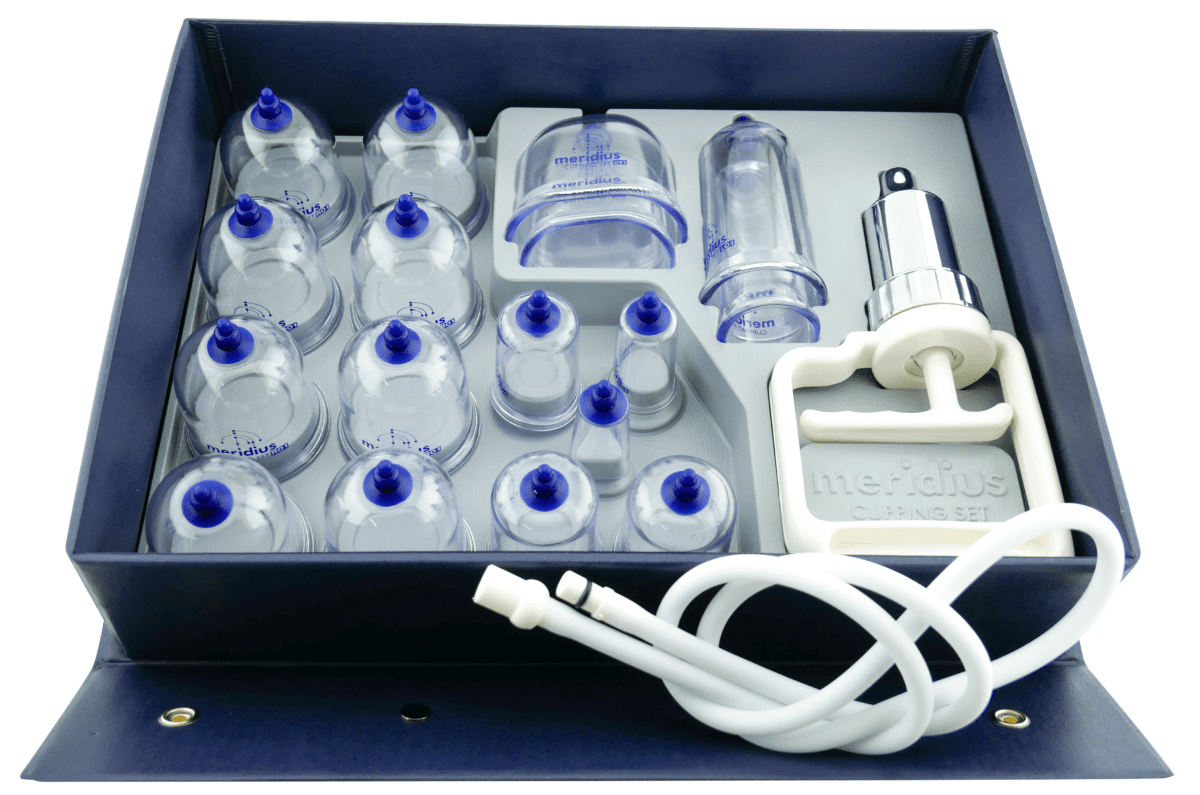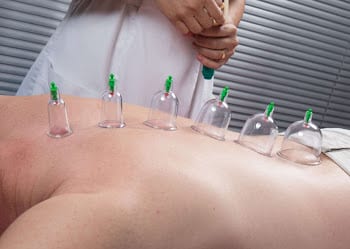Dry Cupping within Clinical Therapy
By Dawn Morse MSc
As published in International Therapist Magazine
An introduction to Myofascial Dry Cupping and use within injury treatment for soft tissue disfunction:
Dry Cupping as a therapy modality dates back to ancient Egyptian, Chinese and middle Eastern cultures. Historically use of the modality is widespread across the world and can be found in Latin America, Europe, the Middle East and Asia.
Today Cupping therapy is practised from two distinct perspectives with treatment aims being placed within Eastern or Western techniques. Both treatment perspectives will have an effect on the physical body, but the aim of the treatment will differ. For example, Western practise aims to have a direct effect on the musculoskeletal (MSK) system to treat a wide range of conditions relating to MSK pain and dysfunction, such as:
- Joint or muscle pain,
- Restricted range of motion,
- Tension headaches,
- Plantar fasciitis,
- Tendonitis or Tendinopathy,
- ITB syndrome and much more.
When used within a clinical setting Dry Cupping is often used alongside other modalities such as massage therapy, Dry Needling, joint mobilisation or Electrotherapy depending on the needs of the client.

Dry Cupping from a Western / Clinical perspective increased in popularity after the 2012 London Olympics, when swimmer Michael Phelps appeared in multiple photos with cupping marks. This created a buzz around the modality and by the next Olympics, use was more widespread and Cupping marks were evident on many athletes. Since then, Dry Cupping has continued to grow in popularity and it’s now common to see athletes from a range of sports and levels with cupping marks. Plus, the benefits of Dry Cupping aren’t just confined to athletes, as many therapists now offer this treatment alongside massage therapy.
Effects of Dry Cupping:
Dry Cupping produces a suction lift, which pulls blood into the area being treated. The main types of cups are fire cups (where fire is used to expel oxygen inside the cup and when placed onto the tissue a vacuum is then created), silicone cups and vacuum cups. Within a clinical setting vacuum cups are preferred as the suction can be easily adjusted and recorded within note taking.
Once suction has been created, the affected tissue becomes saturated with fresh blood while the vacuum draws the blood inside the muscle, out into the wider tissue space (often referred to as the interstitial tissue space). This is demonstrated by the ‘hickey like’ mark that is typically left behind. The mark may produce a light red through to dark purple appearance, but it shouldn’t be painful.
Just like massage therapy, the intensity of the cups should be monitored during treatment, so that the client doesn’t experience pain, or a negative effect.
Some clients may be put off by the marks left from the use of Dry Cupping, and in these instances lighter cupping can be used, and the cups can be taken off more quickly so that marks aren’t left on the skin.
As blood is drawn into the tissues around the cups the body will begin to develop new blood vessels called neovascularisation (new blood vessel formation).
As new vessels form, tissue health is improved through the increased supply of oxygen and nutrients.



Effects of Dry Cupping:
Sterile inflammation can also be produced through the application of Dry Cupping. The microtrauma caused by the cups is similar to sterile inflammation produced by friction techniques in massage therapy. During this reaction the body increases localised blood flow and stimulates the release and migration of white blood cells, platelets, fibroblasts and other chemicals to promote localised healing.
Dry Cupping produces myofascial decompression of the tissue, and the suction lift stimulates an inverse stretch reflex, which leads to reduced muscle tension, increased pliability, and range of motion. The reduction in muscle tension often leads to a reduction in pain experienced by the client as pressure on the nerves within the tissue is reduced. .
Key Benefits of dry Cupping Include:
Increase in localised circulation, which increases oxygenation and nutrient levels within the soft tissue.
Increases removal of chemical irritants through increased diffusion and renewed blood flow to the tissue.
Stimulates sterile inflammation and a renewed healing process.
Increases pliability of the muscle tissue and range of motion at the joint.
Reduced pain sensation.
Cupping techniques that include active movement stimulate the nervous system and aid muscle memory and proprioception.
Benefits for the therapists too:
Although there are multiple benefits for the clients when Dry Cupping is used within a clinical setting, there are also several benefits for the therapist too, which include:
Reduced pressure on your hands and wider body,
- Increase in treatment efficiency through ability to treat multiple areas at the same time,
- Opportunity for self-treatment with the cups,
- Ability to treat areas too sensitive for downward pressure produced by massage therapy, as often clients are more tolerant of the upward lift produced by the cups.
Dry Cupping is a versatile modality, and within a couch-based treatment therapists can use a wide range of cupping techniques to meet the client’s needs. Dry cupping can also be used for ‘off couch’ activities too, as the cups produce a functional release within the tissue when performing stretch techniques, such as cat / cow, thread the needle or standing hamstring stretch. Cupping used within compound exercises such as squat, lunge or chest press, can also decompress the tissue and produce a functional release.
As we experiment more with Dry Cupping, and more research is punished from a western perspective, further benefits may come to light, and I’m sure this modality within clinical therapy will continue to grow.
By Dawn Morse BSc, PGCE, MSc,
Dawn is a sports science and therapy lecturer and the director of Core Elements Training. Core Elements Training offers a range of accredited qualifications and short courses, including Level 3 & 4 Sports and Remedial massage therapy, Level 5 Diploma in Sports and Clinical Therapy and CPD short courses such as Dry Needling, Dry Cupping, Manual Therapy, Electrotherapy and Rehabilitation.
To find out more about Core Elements accredited Face to Face or Live Online CPD short course in Dry Cupping please visit the course page by Clicking Here.
To find out more about Core Elements accredited Online short course in Dry Cupping please visit the course page by Clicking Here.

